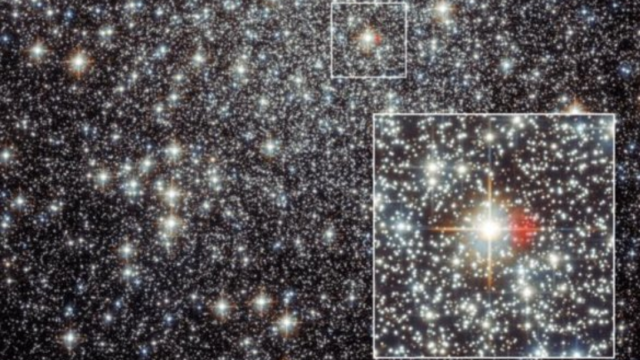Scientists think that they’ve stumbled upon the remains of a stellar explosion first observed by Chinese astronomers over 2,000 years ago, according to a new paper.
Novae are explosions that occur on the surface of white dwarf stars sucking up matter from a partner in a binary system. After the blast, they leave behind clouds of gas and dust, forming a nebula. Bright outer space events have been noted by ancient astronomers throughout history, but this nova would be one of the earliest confirmed extrasolar events, the authors write in the paper to be published in the journal Astronomy & Astrophysics.
“We measured the brightness of the nova we found and calculated backwards how old it was, which was 2,000 years old,” study author Fabian Göttgens, a Ph.D student at the Georg-August-Universität in Germany, told Gizmodo. “That’s exactly what we needed.”
Novae occur after white dwarves suck up too much hydrogen from a partner and undergo a cataclysmic fusion event on their surface, increasing their brightness by several orders of magnitude and leaving behind a cloud of leftover gas. The researchers set out on a search for novae remnants in globular clusters, which are essentially miniature galaxies full of stars within our own galaxy.
Scientists hypothesize that globular clusters should have more binary stars with white dwarfs, according to the paper, but they have only ever observed two novae in globular clusters.
The team observed the globular cluster NGC 6656 for seven nights between 2015 and 2017 using an instrument called MUSE attached to the Very Large Telescope in Chile, as part of an ongoing survey, during which they found the nova remnant by chance.
In 48 BCE, Chinese astronomers documented a “guest star” in their constellation Nandou (located in the part of the sky that we call Sagittarius). When the researchers compared the coordinates of the guest star and the nova remnant they discovered, the two were quite close to one another. They calculated the approximate age of the nebula as 2,000 years, and inferred that their nova probably would have been visible from the Earth. They concluded that the guest star in the ancient Chinese records likely left behind the nova remnants they were observing.
The sky is very big, so it’s possible that this is just a coincidence. It’s difficult to accurately convert the ancient Chinese sky map into modern-day coordinates, according to the paper. And there are other objects in the sky that might look similar to nova remnants, though the researchers thought that other interpretations were less likely.
But this isn’t the first time that modern astronomers have found evidence of a stellar explosion documented by ancient astronomers. Another team recently re-located the remnants of a nova documented by Korean astronomers in 1437, and Chinese astronomers first documented the supernova that produced the Crab nebula in 1054.
It’s a testament to the fact that humans have been skilled astronomers since long before the first telescope was invented.
